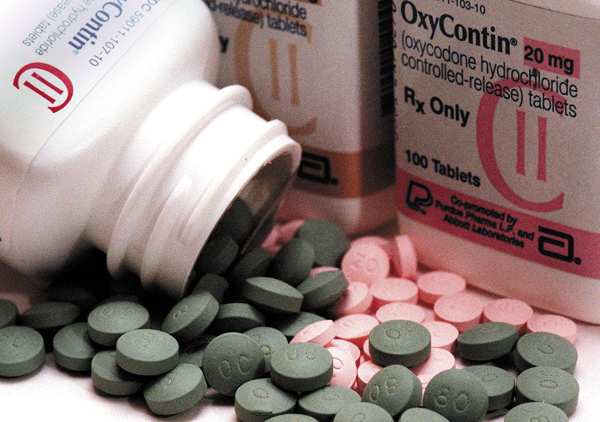Tennessee’s ‘Absolutely Crazy’ Opioid Law
/By Pat Anson, PNN Editor, and Blake Farmer, Nashville Public Radio
Since the CDC released its opioid guideline in 2016, over 30 states have passed legislation that limit opioid prescriptions in some way. Most limit the supply to a few days for initial opioid prescriptions and some set limits on the doses that doctors can prescribe.
Which state has the toughest opioid regulations?
“Tennessee is just absolutely crazy,” says Bob Twillman, PhD, Executive Director of the Academy of Integrative Pain Management.
Twillman is referring to a strict and complicated state law that took effect in July that restricts how long Tennessee doctors can prescribe opioids to patients.
“Depending on what you document and depending on your judgement of what’s going on with the patient, you’re either limited to a 3-day supply, a 10-day supply, a 21-day supply or a 30-day supply of an opioid,” Twillman told PNN.
“You wonder how in the world they’re ever going to police this. If it’s a particularly severe case you could do a 21-day supply, but if it’s a rare case then you can do a 30-day supply. What is the difference?”
Tennessee also limits the dose that doctors prescribe, under a complicated formula that lowers the allowable dose the longer a prescription lasts. In other words, you may get more pills but the dose will be smaller.
Any “significant deviation” from Tennessee’s opioid law could result in disciplinary action for a doctor not showing “sound medical judgment.” First offenders could be banned from prescribing opioids for five years.
“They’ve left us saying make your own best judgement and document the reason for it and cross your fingers and hope you’re going to be okay,” says Twillman.
Some doctors have decided not to take that risk. Many primary care providers in Tennessee have stopped prescribing opioids and are referring patients to the state’s dwindling supply of pain clinics, where waiting lists are long and there’s no guarantee a new patient will even be able to get treatment.
Insurers Drop OxyContin
But it’s not just legislation that limits how pain patients are being treated in Tennessee. Insurance companies are refusing to pay for some opioids.
The largest insurer in Tennessee recently announced it will no longer cover prescriptions for OxyContin, what was once a blockbuster pain reliever. It’s the latest insurance company to turn against OxyContin, whose maker, Purdue Pharma, faces dozens of lawsuits related to its high-pressure sales tactics around the country and contribution to the opioid crisis. Last fall, Cigna and Florida Blue both dropped coverage of the drug.
Top officials at BlueCross BlueShield of Tennessee (BCBST) say newer abuse-deterrent opioids work better than OxyContin, and starting in January, the insurer covering 3.5 million Tennesseans will only pay for opioids made by other pharmaceutical companies.
“We felt it was time to move to those products and remove Oxycontin from the formulary, which does still continue to have a higher street value,” said Natalie Tate, the insurer’s vice president of pharmacy.
OxyContin was reformulated in 2010 to make the drug harder to misuse — but it’s still possible to crush or liquefy in order to snort or inject it.
The latest long-acting opioids that BlueCross BlueShield of Tennessee is going to start covering — Xtampza and Morphabond — are still more difficult to misuse, according to the company and some pharmaceutical experts.
Practicing pain physicians in Tennessee — who regularly battle with insurance companies — approve of the change, though they said OxyContin was already falling out of favor. And they argue trading one opioid for slightly safer ones doesn’t address a larger gripe that physicians have with insurers over paying for other, non-addictive types of treatment.
“We will have denials and prior authorizations on a muscle relaxer, and we will have no issue getting an opioid through the insurance company,” said Dr. Stephanie Vanterpool, an anesthesiologist at the University of Tennessee and the president-elect of the Tennessee Pain Society.
“The physicians or the doctor’s offices jump through hoops to get the better medication for the patients,” said Vanterpool. “And when I say better medication, I mean the medication that’s treating the cause of the pain, not just the medication that’s covering up the pain.”
Not to say OxyContin won’t be sorely missed by some patients.
“There are plenty of people who benefit from that drug,” said Terri Lewis, a patient advocate and rehabilitation specialist from Cookeville, Tenn.
Lewis is suspicious of BCBST’s motives since the insurer may be blamed for its role in the opioid crisis. Embattled Purdue Pharma could also be a convenient scapegoat.
“Maybe this is a good decision,” Lewis said. “But it smells like a political decision.”
This would be just the latest decision inserting politics into a nuanced medical problem that affects millions of pain patients.
John Venable of Kingsport, Tenn., was shown the door by his pain clinic in July after more than a decade on oxycodone — a generic, short-acting version of OxyContin.
“I just felt like I was in a hopeless state, like, ‘there is no help for John,'” he recalled.
At their worst, he said his headaches get so debilitating “that death would be a relief.” Despite his dread, he’s noticed something surprising over the last few months without opioids — his crippling headaches haven’t gotten that much worse, if at all.
“It very well might be a blessing in disguise,” Venable said.
The retired builder and one-time pastor said he prays that those losing OxyContin also will get to use the moment as an opportunity, though he knows many can’t cut ties with opioids. And he worries some will turn to more dangerous drugs off the street or even contemplate ending their own lives.
Experts point out that the number of opioid prescriptions has already been falling around the country. And in Tennessee, BCBS has experienced a 26 percent drop in opioid prescription claims over three years.
But restricting legal access to opioids hasn’t turned back the rise in overdose deaths, which hit a record in Tennessee and nationwide last year.
This story is part of a partnership that includes Nashville Public Radio, NPR and Kaiser Health News.
Kaiser Health News is a nonprofit news service covering health issues. It is an editorially independent program of the Kaiser Family Foundation, which is not affiliated with Kaiser Permanente.


























